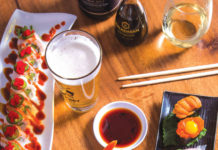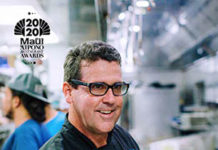Story by Marti Rosenquist
With a palate prepped for the new and different, I traveled last year to some of the world’s most esteemed food cultures and urban centers. i expected to be bowled over by unfamiliar flavors and a level of culinary excellence not available on our small island. To my surprise, that wasn’t the case. Maui had spoiled me since my last “grand tour” by offering, on a regular basis, access to some of the world’s best foods.
It shouldn’t have come as a surprise. If you scroll through a recent CNN viewers’ poll of the world’s fifty tastiest foods, you’ll notice that more than half the items are ubiquitous to Maui and our neighbors to the west (in other words, the East). Located smack-dab in the middle of the vast Pacific, Hawai‘i has been a no-passport-required food mecca ever since sugar plantations lured workers to the Islands from far-flung locales.
As the emerging global community makes the world ever smaller, and the Food Channel turns armchair travelers on to what’s available “out there,” culturally diverse dishes that have starred in Hawai‘i’s cuisine for over a century have been launched from humble ethnic neighborhood kitchens to center stage on the menus of five-star eateries and swank resorts. To wit, the 2013 ‘Aipono Restaurant of the Year, Ko at the Fairmont Kea Lani, features a menu by Chef Tylun Pang that was inspired by foods that locals have held near and dear since the plantation days.
Indeed, “The World on a Plate” was 2012’s number-one food trend, according to Baum & Whiteman, a restaurant-consulting company that creates high-profile restaurants for clients around the world. In 2012, sambal, bibimbap, and kimchi entered the everyday foodie lexicon after being discovered by city dwellers, courtesy of that other darling of today’s culinary scene, food trucks. Those roving kitchens also helped to bring novel flavors to the masses, providing guilt-free antidotes to the nation’s fast-food malaise by dishing up health-enhancing fare and an inexpensive lunch-hour getaway.
Nutritious fun food, as cheap as the chains and far more flavorful — is it any wonder that food trucks are popping up in empty parking lots across Maui? This year a dozen or so modern meals on wheels competed to win our hearts and vie for gold in the newest ‘Aipono category, Best Food Truck. It was a close race, with Geste Shrimp taking the Gold and Gogi Korean Taco Truck nabbing the Silver.
At the same time that our dinner plates have gone global, the locavore movement helped to boost the quality of items on the Maui food scene. Island farmers and ranchers provide an increasing abundance of locally sourced items for environmentally aware chefs, many of whom also plant their own gardens.
For those who favor European over Asian/Pacific Rim cooking, the Islands offer plenty of old and new players, as well. The Lodge at Ko‘ele Dining Room, the first Gold ‘Aipono winner for the Best Restaurant on an Island Next Door, serves what could be considered a classic menu, but now uses 100 percent locally sourced ingredients that include Big Island beet terrine, Kahua grass-fed tenderloin, North Kohala lamb loin with minted carrots and organic beans, and, of course, locally caught fish.





